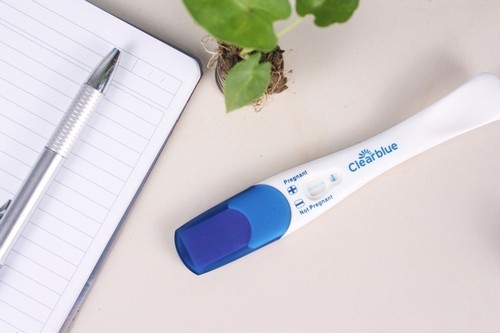Amniotic fluid or amniotic fluid is a biologically active medium that surrounds the fetus, ensuring its intrauterine life. Before or during childbirth, the fetal membranes rupture, and water flows from the woman.
Their outpouring is considered a sure sign of the imminent birth of the baby.
Shortly before the expected date of birth, each expectant mother should carefully listen to her own feelings. Many women are afraid to miss the start of labor, especially if the pregnancy is first.
How and when do the waters leave
When do the waters leave? The ideal time for the outflow of amniotic fluid is the first period of labor, at the time of active disclosure of the cervix. In the process of the next fight, the fetal membranes are torn, and after that the force of the uterine contractions begins to increase with a doubled energy. In this case, experts say that the birth of the baby is just around the corner.
But not all women in labor have a similar scenario. Someone may get away with water, but there can be no contractions. Usually this happens unexpectedly, and we are talking about premature outflow of water. Even if light contractions soon appear, they will be unproductive, that is, the cervix has not yet had time to prepare for labor. In this case, the doctor should decide on the nature of delivery.
How do the water go? The process of pouring them out can be different. First of all, the front waters leave, which are located in front of the fetal head, their volume usually does not exceed 200 ml. The remaining part of the water in the uterus will depart after the birth of the baby. That is why colorful stories about how water flows during pregnancy during a stream are most often not believable.
Many women say that suddenly their underwear became wet, and at first they confused the water with involuntary urination. Less often, the fetal bladder is slightly damaged, and then the amniotic fluid begins to partially leak, and the woman confuses it with suddenly intensified vaginal discharge. This condition is called leakage of amniotic fluid.
What is earlier – contractions or discharge of waters?
Many expectant mothers, especially those who will have to give birth for the first time, are concerned about the question: when does the water leave – before the contractions or after, and why does this happen? In fact, amniotic fluid can move away before the onset of the first contractions, and already in the process of childbirth, during the period of active disclosure of the cervix.
If the water is poured out before the start of the first contractions, we are talking about their premature discharge. A similar situation occurs in 10% of women in labor and it is associated with a certain risk.
Water can drain during weak contractions, when the cervix is not more than 4 cm wide. In this case, they speak of an early outflow of water.
If contractions are regular and intense, and the neck is open 4 cm or more, the water leaves in a timely manner.
Late outflow of water is said to be when the membranes rupture after some time after the cervix is fully opened.

How to cause the discharge of water?
Of course, you should not provoke the outflow of water on your own, as this is fraught with serious consequences for the fetus.
The following adverse factors can cause premature discharge of amniotic fluid :
- fall or physical force, blow applied to a pregnant woman;
- diseases of the expectant mother, for example, of an infectious nature;
- heavy physical and psycho-emotional stress, stress.
In all these cases, the water leaves without fights, what to do in this situation – the doctor decides.
If for some reason the waters do not flow away, medical personnel can call them out in an artificial way in the hospital. In such a situation, a decision is made on early puncture of the membranes with the aim of enhancing labor, provided that there are contractions and the water does not drain.
Puncture of the bladder usually goes without complications if the cervix begins to open and the fetus is ready for childbirth. In other cases, this manipulation is unjustified and can cause negative consequences, primarily for the child.
What to do if the water has moved
If amniotic fluid drainage occurs, no qualitative and quantitative characteristics of the amniotic fluid should have an effect on the woman’s actions – she should inform the doctor as soon as possible about this fact and go to a medical institution.
Some women are perplexed why in a hurry, if the waters flow away gradually and even after their outflow, their well-being does not suffer. The answer is simple: after violation of the integrity of the membranes, the sterile conditions in which the fetus was present throughout the gestation period are violated, giving access to infectious factors.
In addition, after the waters leave, the unborn child cannot be without water for more than 12 hours, delivery after this period can cause irreversible anomalies in its vital organs on the basis of developed hypoxia – oxygen starvation.
Therefore, if childbirth does not begin 10-12 hours after the water drains, the doctors decide on how to call them artificially. In most cases, specialists are inclined to cesarean section, especially in the case of absolute indications – with the transverse position of the fetus in the uterus and loss of loops of the umbilical cord or limb of the child along with the discharge of amniotic fluid.
Premature discharge of amniotic fluid is dangerous in early pregnancy. In this case, specialists try to do everything to further save it and save the life of the future baby.

When does the birth begin?
Most often, pregnant women leave the water at home, and regardless of how much amniotic fluid discharge is observed, you need to see a doctor or go to the hospital yourself. It is difficult to predict the exact onset of childbirth after the outflow of water, all individually.
Some women give birth safely 4-6 hours after the discharge of the amniotic fluid, others may have difficulty, and in this case, the intervention of doctors is required, since the baby should be born no later than 12 hours of an anhydrous period.
It is true to answer the question of how much water leaves before delivery, how to determine their exact time, not a single specialist can. Generic activity is an individual process, depending on the course of pregnancy and the characteristics of the woman’s body.
After examining the specialist, the expectant mother will be informed about further tactics of obstetric care.
Usually, when water leaves during childbirth, labor is still weak, and the cervix does not exceed 4 cm – the woman is escorted into the ward for women in labor, where she will be during the first period. With active labor, when the cervix is almost fully opened, a woman in labor is sent immediately to the birth hall.
Amniotic fluid outflow is a natural process that you do not need to be afraid of, because its result in the near future will be the birth of a baby.



